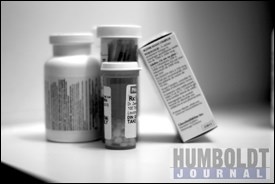Over the past 50 years or so, drunk driving has evolved from an acceptable social norm to a crime viewed with as much disdain as nearly any other.
Mothers Against Drunk Driving redefined the way society looked at the issue, changing it from a common practice to something that is shunned and feared.
But what about drugged driving? Would you believe that drugs are nearly as common a factor as alcohol among people who die on Canada's roads?
They are, and that's one of the reasons why Dec. 1-7 has been designated National Safe Driving Week by the Canadian Safety Council. Safe Driving Week began in 1956 and this is the second year in a row that the focus is on drugs and driving.
"We're doing this because everyone knows about drinking and driving, but people don't appreciate how dangerous it is to mix drugs and driving," said Catherine Gaudreau, the communications coordinator with the Canada Safety Council.
The biggest obstacle to making drugged driving as notorious as drunk driving is the complexity of drugs. Everyone knows it's wrong to drink eight beers or snort cocaine and get behind the wheel, but prescription drugs and even over-the-counter medicines can be just as dangerous.
"Not as many studies have been done on this as with drunk driving," Gaudreau said, "so it's difficult to know how much is too much."
That problem extends to law enforcement as well. Police officers have been trained to spot the signs of drunk driving, but identifying drug impairment can be more difficult. There is a growing group of drug recognition experts in Canada that can collect or arrange to collect a swab, urine or blood sample to test for drugs. Unfortunately, those experts are not always accessible (the closest one to Humboldt is in Saskatoon) and waiting for one isn't necessarily practical in the context of a roadside stop. There's no breathalyzer for drugs.
"Drug impairment is certainly more difficult to detect than drinking," said Cpl. Randy Wittig of the Humboldt RCMP. "We don't have roadside tests to indicate drug use. It's based on evidence of impaired driving - swerving and things like that."
Another complicating factor is that drugs, unlike alcohol, don't discriminate by gender or age. In fact, young drivers between the ages of 15 and 24 are more likely to be impaired by cannabis than by alcohol. In Wittig's experience, that is certainly the case.
"Liquor tickets are expensive," he said. "If a kid smokes one joint and isn't showing signs of impairment, it's a grey area in terms of detection."
Officers are permitted to issue a 24-hour roadside suspension for both drugs and alcohol, but determining a level of drug impairment isn't as easy as blowing into a breathalyzer.
"Mild intoxication is difficult for us," Wittig said, adding that he even has questions about how to approach those kinds of situations.
Women are also almost as likely to be impaired by drugs as men; when it comes to alcohol, nearly three quarters of drunk drivers are men.
It will take years, possibly decades, before drugs and driving gets to the same level as drunk driving. Still, National Safe Driving Week is a place to start.
"The big message we want to get out is that people need to be responsible," Gaudreau said. "People need to have conversations with their family, friends and health care professionals about this issue."
Wittig agreed.
"Changes are coming," he said. "This is a big issue, the question is how to deal with it."

.png;w=120;h=80;mode=crop)


